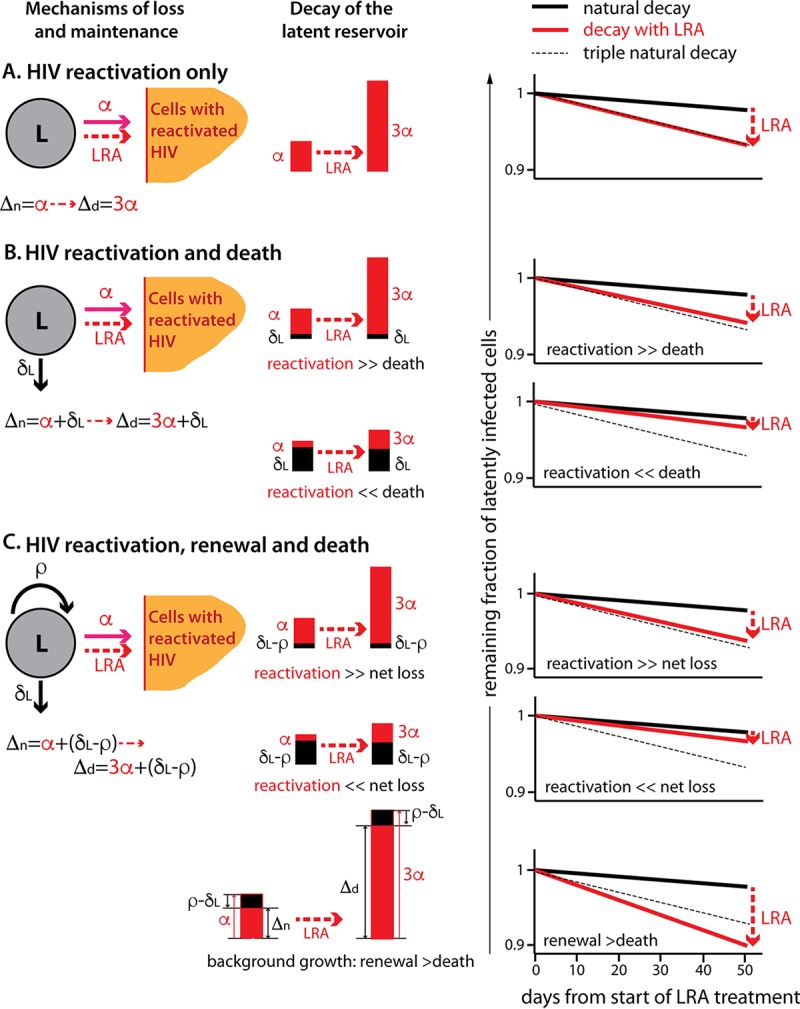FIG 1.

Effects of underlying latent-reservoir dynamics. Depending on the mechanisms driving latent-cell decay under ART, we would see a different relationship between additional virus reactivation and the change in reservoir decay under LRAs. We do not know all the processes that occur in the reservoir, but we show the effects of three scenarios, schematically depicted on the left. (A) HIV reactivation is the only mechanism of loss of latently infected cells (activated cells are represented by a different symbol, because we did not follow them in the model). (B) Latently infected cells can reactivate HIV transcription or simply die without HIV reactivation. (C) Latently infected cells can reactivate HIV, die, and renew by division or new infections. L, latently infected cells; A, cells with reactivated HIV transcription; α, natural HIV reactivation rate (solid red arrow); 3α, 3-fold increase in the HIV reactivation rate in the presence of an LRA (dashed red arrow); δL, death rate of latently infected cells; ρ, renewal rate of the latent reservoir; Δn, natural decay rate of the latent reservoir; Δd, decay rate of the latent reservoir in the presence of an LRA. (Middle) The bars represent the decay rates of the reservoir under ART and with an LRA, with the contribution of HIV reactivation in red. (Right) Reservoir decay under LRA that triples the HIV reactivation rate (red line) compared to the natural decay (solid black line) and triple natural decay (dashed line).
